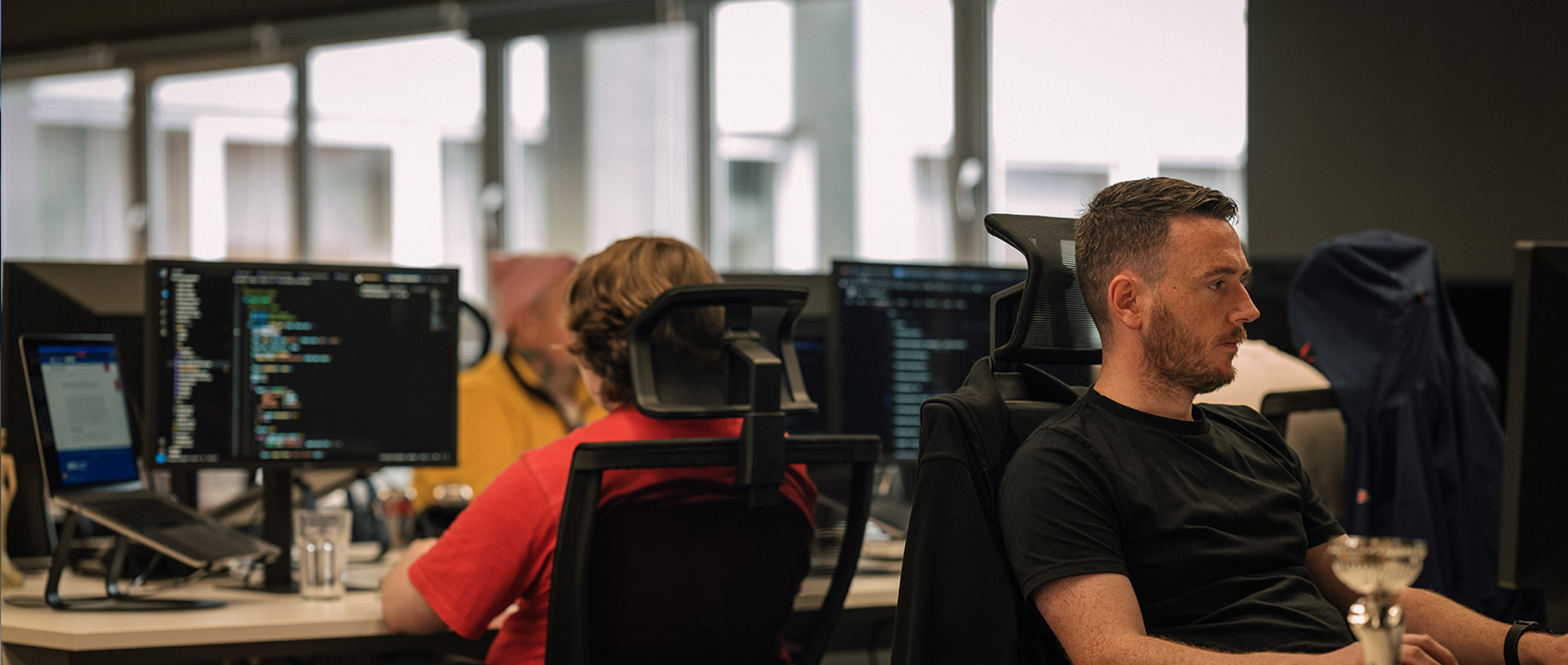The origin of digital newsrooms stretches back to 1980 when the very first newspaper could be read online – albeit temporarily – however it wasn’t until much later that the publishing industry really began to embrace modern methods of creating and sharing content.
Today, the vast majority of newspapers have a digital presence, with younger readers in particular demonstrating a clear preference for online news over more traditional formats.
Evolution of digital publishing
In the UK, the percentage of people who read online news, magazines and newspapers has risen from 20% in 2007 to 70% in 2020,1 and in the US, more than 8 in 10 Americans now access news via digital devices.2
We haven’t just changed how we consume content, how we produce it has evolved too, with global teams able to collaborate more closely and effectively than ever before thanks to incredible technological advances within the digital publishing sector. While some organisations continue to use bespoke CMS systems, many have made the move to enterprise-ready platforms, with the majority favouring WordPress according to recent research commissioned by Press Gazette.
Online news through the years
1980
The Columbus Dispatch became the first newspaper in the world that could be read online as part of an experimental project between Compuserve and Associated Press. This was later extended to the Washington Post, The New York Times, The Los Angeles Times and other AP members, however, the experiment ended in 1982.3
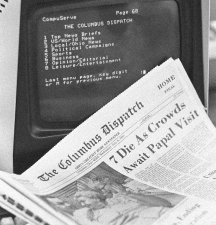
1993
The Mosaic web browser – created by the National Center for Supercomputing Applications – was released, and quickly gained popularity due to being the very first browser to show both text and images on the same page together. Its popularity was overtaken by Netscape Navigator by 1995, at which point Mosaic was licensed by Microsoft to create Internet Explorer.4 The world’s first journalism site was launched by the University of Florida.5 Nando, an internet news service, was launched by the News & Observer newspaper in North Carolina.6
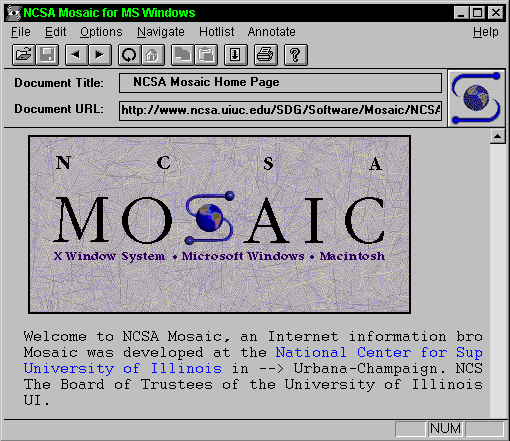
1994
The Telegraph launched an online version of its newspaper – entitled the Electronic Telegraph – becoming the first UK publication to do so.7
1996
The New York Times began publishing daily content at NYTimes.com8 and today has over 2.8 million digital-only subscribers.9
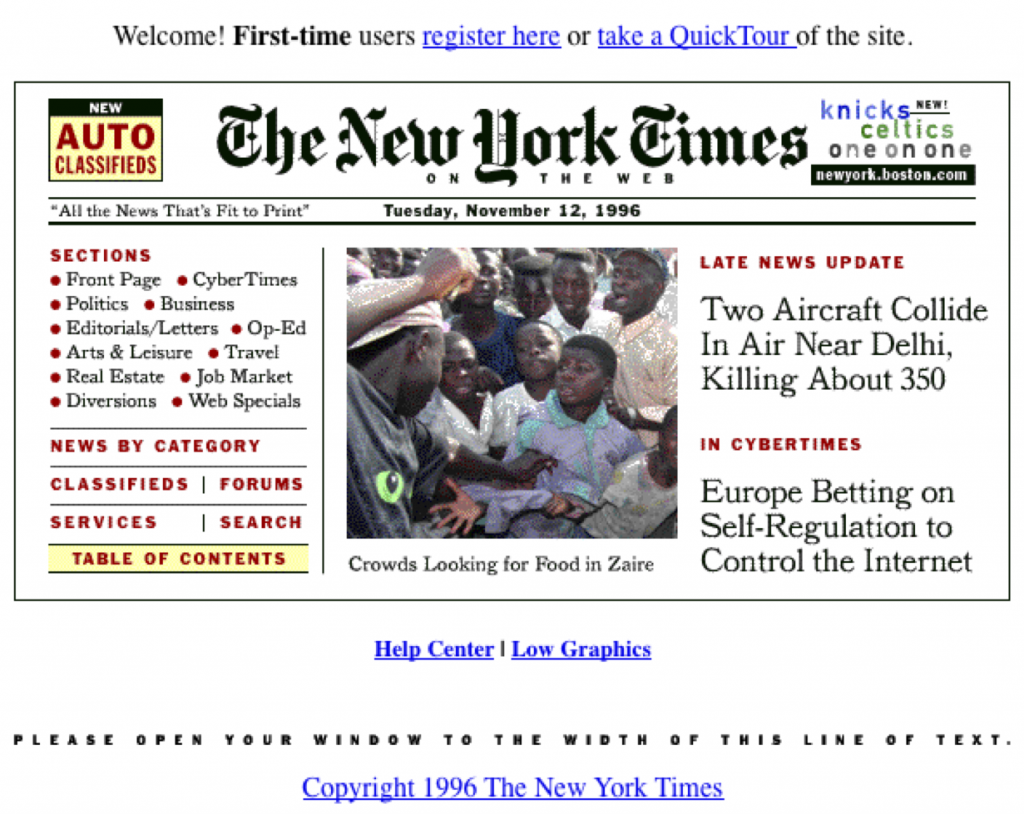
1997
BBC Online was launched and went on to show the Queen’s Christmas speech online for the first time later that year.10
1999
The Guardian newspaper launched its online version – Guardian Unlimited.11 RSS syndication was developed by Netscape, providing news feeds for subscribers.12 The Online News Association was formed.13 The Times and The Sunday Times created a digital presence.14

2000
Associated Press launched AP Streaming News to give AP members easy access to a multimedia ‘real-time’ audio and video news service.15
2002
El Pais, Spain’s most popular news publisher, became the first in Europe to charge for online content.16
2005
Several news blogs were launched including The Huffington Post, Mashable and TechCrunch.
2006
BBC News launched a blog for its editors.
2010
The Times and The Sunday Times began charging for content access across their sites.17
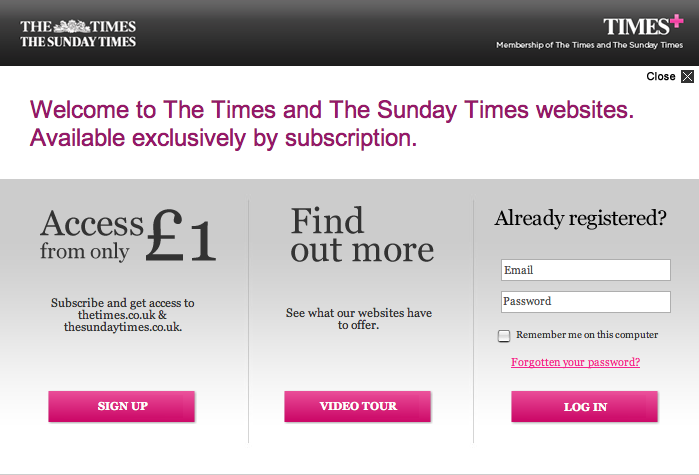
2012
The total of digital subscribers of The Financial Times surpassed its print subscribers.18
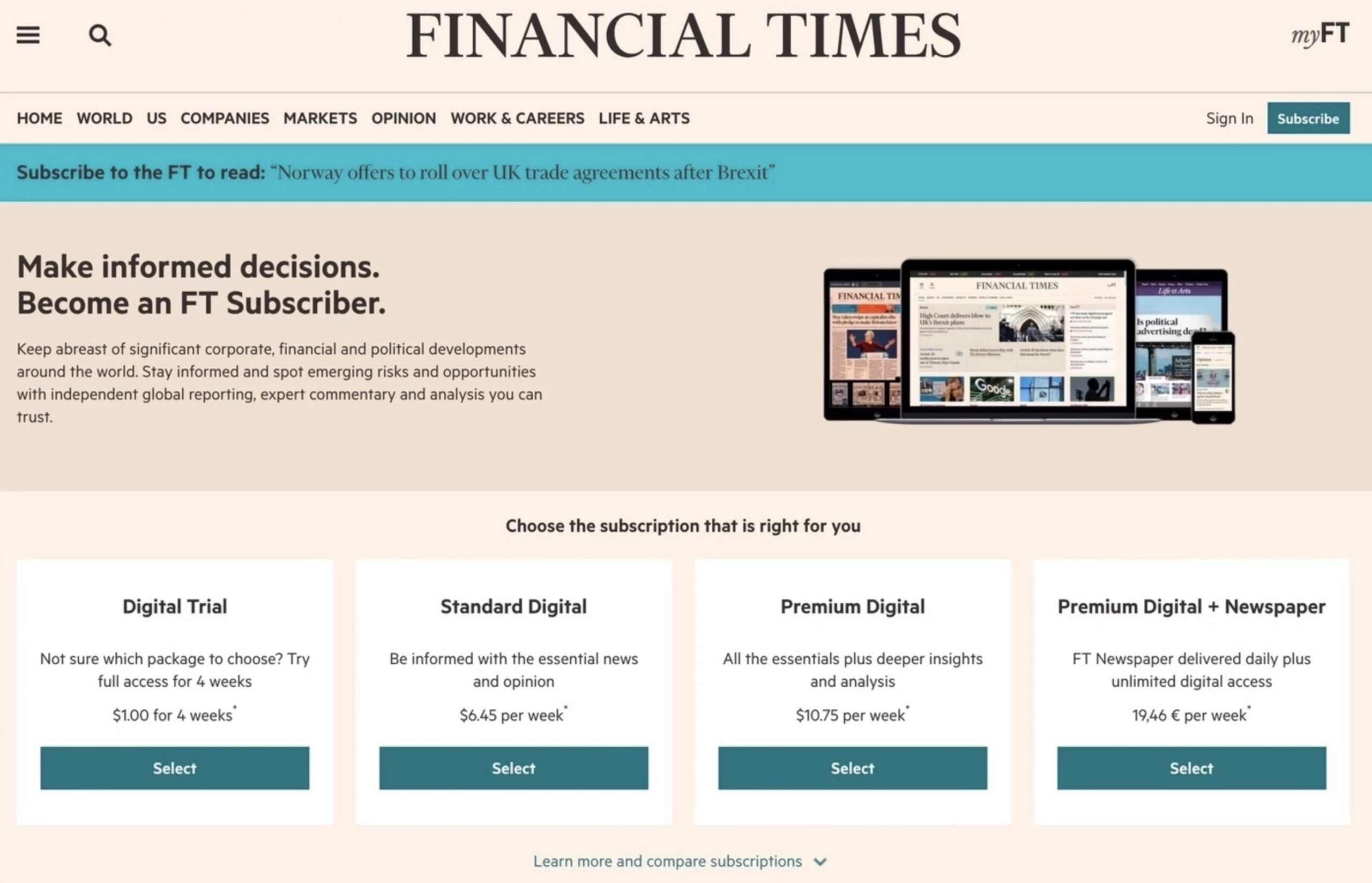
2018
Paid digital subscriptions for The Times and Sunday Times overtook paid print subscriptions.19
2019
The Telegraph reported more paying subscribers online than in print for the first time in its 164-year history.20
2020
Digital surpassed print to become the second-largest advertising medium after TV.21
Looking ahead
Find out why WordPress is the leading choice for global newsrooms and enterprise organisations – check out our white paper:
Sources
- https://www.statista.com/statistics/286210/online-news-newspapers-and-magazine-consumption-in-great-britain/
- https://www.pewresearch.org/fact-tank/2021/01/12/more-than-eight-in-ten-americans-get-news-from-digital-devices/
- https://www.poynter.org/reporting-editing/2014/today-in-media-history-compuserve-and-the-first-online-newspapers/
- http://www.ncsa.illinois.edu/enabling/mosaic
- http://iml.jou.ufl.edu/about.htm
- https://en.wikipedia.org/wiki/Nando
- https://corporate.telegraph.co.uk/about-us
- https://www.nytimes.com/1996/01/22/business/the-new-york-times-introduces-a-web-site.html
- https://www.statista.com/topics/994/newspapers/#dossierSummary__chapter4
- https://www.bbc.com/historyofthebbc/anniversaries/december/bbc-website-launched
- https://www.theguardian.com/gnm-archive/2019/nov/06/from-new-media-to-guardian-unlimited-records-of-the-guardians-first-years-online
- https://www.britannica.com/technology/RSS
- https://journalists.org/about/
- https://en.wikipedia.org/wiki/The_Times
- https://www.journalism.co.uk/news/streaming-news-to-your-site/s2/a551/
- https://wan-ifra.org/2021/07/how-spains-el-pais-drove-100000-digital-subscriptions-during-the-pandemic/
- https://pressgazette.co.uk/ten-years-of-the-times-digital-paywall-how-murdochs-big-gamble-paid-off/
- https://www.theverge.com/2012/8/1/3213020/financial-times-digital-subscribers
- https://www.news.co.uk/2018/07/the-times-the-sunday-times-reach-500000-subscribers/
- https://www.pressgazette.co.uk/telegraph-marks-huge-milestone-as-number-of-digital-subscribers-surpasses-print/
- https://www.financialexpress.com/industry/technology/digital-surpasses-print-to-become-2nd-largest-advertising-medium-after-tv/1857934

